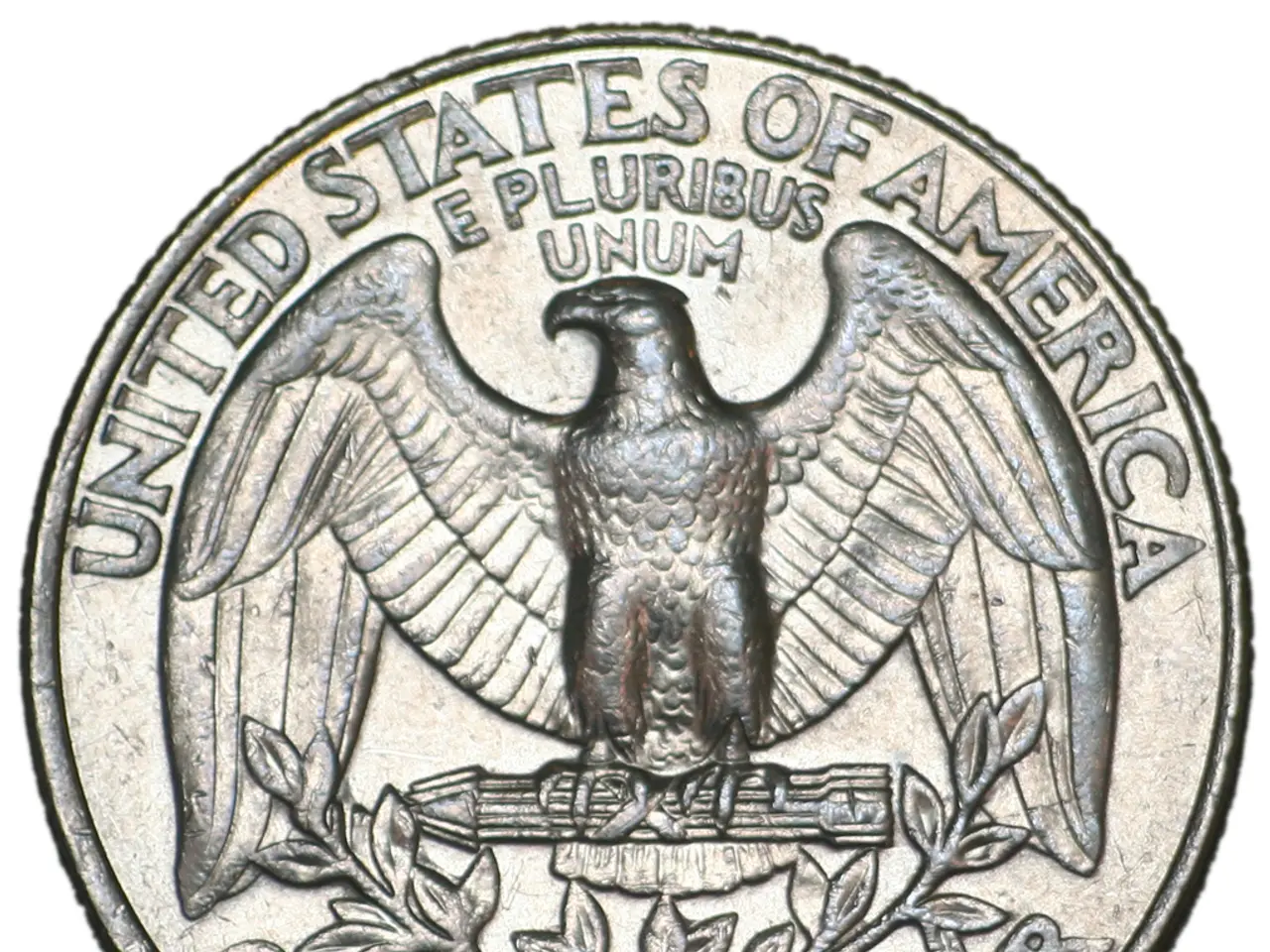Kazakhstani National Currency Experiences Drop Due to Market Influences Causing Decrease
In 2021, Kazakhstan's national currency, the tenge, experienced a significant depreciation. This depreciation was driven by a combination of external and internal economic pressures.
One of the key factors was the strength of the US dollar. A strong dollar often leads to capital outflows from emerging markets like Kazakhstan, making their currencies comparatively weaker. The weakening of major trading partner currencies, such as the Russian ruble, also contributed to the tenge's depreciation, as Russia is a significant economic influencer in the region.
Budget deficits in Kazakhstan further increased currency depreciation pressures. These deficits undermined confidence in fiscal stability, leading to capital flight or reduced demand for the tenge. Global economic volatility, particularly linked to commodity prices like oil (Kazakhstan's key export), also impacted the tenge's value. Lower oil prices reduce foreign currency inflows and fiscal revenues, weakening the local currency.
The broader emerging market context in 2021 included capital outflows due to US interest rate expectations and global monetary tightening, which put pressure on currencies like the tenge to depreciate.
Despite measures taken by the National Bank of Kazakhstan, such as adjusting interest rates to stabilize the tenge, these fundamental economic factors underpinned the depreciation seen in 2021. The National Bank is closely monitoring foreign exchange markets and stands ready to act in the event of speculation or excessive volatility.
It's important to note that the current weakening of the tenge is being driven by market-based factors such as budgetary spending, seasonal dividend payments, increased tourism, and import purchases, not speculation. The increased reliance on imports puts upward pressure on foreign currency demand.
Since 2015, Kazakhstan has allowed its currency to float freely based on market supply and demand. This year's Kazakhstan budget includes major spending on infrastructure and social projects, further increasing demand for foreign currency.
Despite the current depreciation, Kazakhstan's international reserves currently stand at $52.2 billion, providing a buffer to absorb any market shocks. Timur Suleimenov, the National Bank Chairman, attributes the current weakening of the tenge to increased money supply and import demand, but expects domestic production to catch up in the short term.
Sources:
- Monetary policy and currency impact analysis, including strong dollar, budget deficits, and ruble weakness effects on tenge depreciation.
- Emerging market currency crisis dynamics including external pressures like US rate hikes and capital movements.
- Moldabekova points to increased government spending, corporate dividend payouts requiring conversion to foreign currency, and seasonal tourism as drivers of the current exchange rate pressure.
- Large contracts are being signed in Kazakhstan, leading to the purchase of foreign equipment and components, increasing demand for foreign currency.
- On July 23, the U.S. dollar exchange rate in Kazakhstan surpassed 540 tenge at currency exchange offices.
- Suleimenov and Moldabekova both emphasize that the National Bank is closely monitoring foreign exchange markets and stands ready to act in the event of speculation or excessive volatility.
- Fiscal injections into the Kazakhstan economy have grown by 18% year-over-year, while GDP and domestic production have not kept pace.
- Kazakhstan's international reserves currently stand at $52.2 billion, providing a buffer to absorb any market shocks.
- Suleimenov categorizes factors influencing the tenge exchange rate into three main groups: fundamental, market-based, and speculative.
- National Bank Deputy Chairperson Aliya Moldabekova describes the fluctuations in the tenge exchange rate as short-term and largely driven by seasonal and market dynamics.
- National Bank Chairman Timur Suleimenov attributed the current weakening of the tenge to increased money supply and import demand.
- Moldabekova's comments were made to the Kapital news agency.
- The National Bank of Kazakhstan set the official exchange rate at 544.87 tenge per dollar and 639.2 tenge per euro for July 28.
- Suleimenov states that there is no justification for a weakening of the tenge, as oil prices remain high, the U.S. dollar is weakening globally, and there are no external shocks.
- Timur Suleimenov expects domestic production to catch up, but imports will remain high in the short term.
- The current weakening of the tenge is being driven by market-based factors such as budgetary spending, seasonal dividend payments, increased tourism, and import purchases, not speculation.
- The current depreciation of the tenge is due in part to increased reliance on imports, which puts upward pressure on foreign currency demand.
- No new facts were presented in this paragraph that were not already covered in the earlier bullet points.
- Moldabekova states that there is no sign of speculative activity in the current exchange rate fluctuations.
- Since 2015, Kazakhstan has allowed its currency, the tenge, to float freely based on market supply and demand.
- This year's Kazakhstan budget includes major spending on infrastructure and social projects, further increasing demand for foreign currency.
- Suleimenov stated that previously, when the state set the exchange rate, it led to sharp, administrative simultaneous devaluations.
In light of the industry's reliance on oil exports, any global economic volatility, particularly linked to commodity prices like oil, can impact the tenge's value significantly. The finance sector, given the budget deficits in Kazakhstan, also played a role in increasing currency depreciation pressures, as these deficits undermined confidence in fiscal stability, leading to capital flight or reduced demand for the tenge.




